Hi #AmazingNature Community!🌱
Once again, I bring you content that I consider to be of quality, this takes several hours of reading, comprehension and writing.💡📚
But more than that, this is one more publication so that together we can appreciate and contemplate how wonderful our nature is!🐬🐟🦈🦀🐢🐙 I hope you enjoy!🐬🐟🦈🦀🐢🐳

We know species which have a white coloration by nature, such is the case of the polar bear. And from this point of view, it is normal to see them with this coloration, whether you look at them in photographs or in free life.

Photo credits: Angel Ponce
Albinism is a genetic disorder that can even be observed in humans and animals, but is not common in certain species. In cetaceans, abnormally white coloration is uncommon.
The striped dolphin (Stenella coeruleoalba) is a cetacean that has very striking coloration patterns, and an aberrantly colored specimen has never been observed before! Also known as partial leucism. This article documents the first case of abnormally white coloration of an individual of striped dolphin, observed and photographed in the Strait of Gibraltar, in Spain, from a whale watching boat.
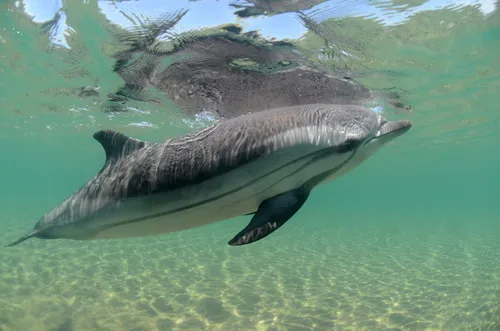
Photo credits: Sergio Martinez
A scientific article by Ezequiel Andreú and Carolina Fernández
Marine Biology - Arijaranda

The Strait of Gibraltar
It is the place where the natural union of two bodies of water occurs: the Mediterranean Sea and the Atlantic Ocean and the separation between two continents: they are Europe and Africa. It is one of the most important waterways in the world as it provides access to the Atlantic Ocean and the Mediterranean Sea (Borrega, 2008).
The administrative location of this place are the countries Spain, the United Kingdom and Morocco (Templado, 1993).

Photo credits: Michal Mrozek
Here we find 6 species of cetaceans, including the amazing striped dolphin. Between the months of July and August there is a greater outcrop and more specimens of these dolphins can be observed (Borrega, 2008).

The striped dolphin (Stenella coeruleoalba)
One of the most impressive aspects that can be seen with the naked eye is undoubtedly its coloration. The term "coeruleoalba" that refers to this species refers to its coloration pattern, with blue and white lines along the back and sides, always tending to a darker coloration on the back and a lighter coloration on the belly. (I could go into more detail in an article dedicated to the striped dolphin😃).
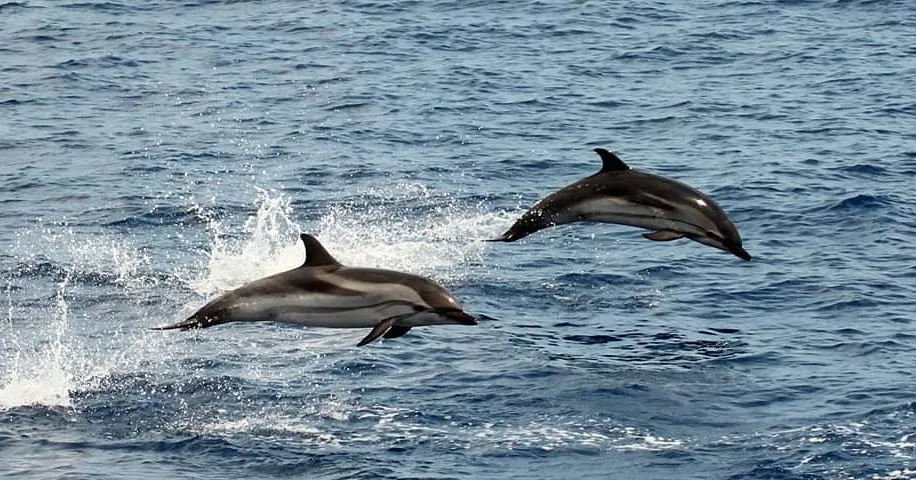
Photo credits: Mélanie Nadalié
The main characteristics are a line that goes from the lower part of the caudal peduncle to the eye and another line that goes from the pectoral fins to the eye, both black, dark blue or bluish black (Frederick, 2002).

Aberrations are very rare in cetaceans
Although we find it impressive to see some species such as orcas or a pink dolphin, cetaceans are not considered as species that present many variations in their coloration, such as birds, for example. And this, despite the fact that the patterns help them to go unnoticed by their predators (Perrin, 2002).
The white colorations on the belly make them "invisible" to a predator if viewed from the bottom up. The dark colorations on the back make them "invisible" to a predator if viewed from the top down.
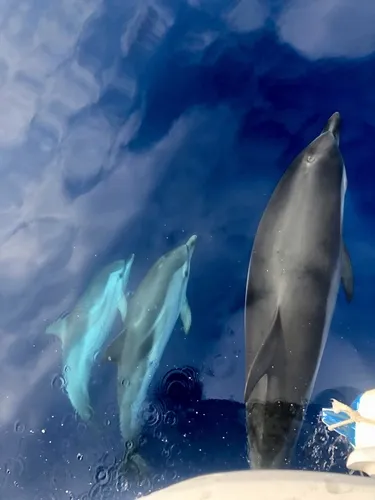
Photo credits: Jack Bark
It is very strange to observe cases of albinism or leucism in cetaceans, this is totally due to the total or partial scarcity of melanin in the skin, for this reason it is very rare to observe leucism or albinism (Fertl and Rosel, 2002).

Research efforts
9 years of research had to go through to find a striped dolphin with aberrant coloration!
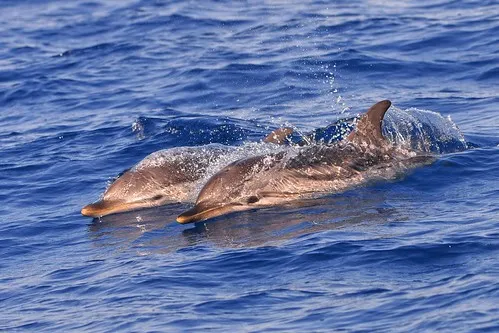
Photo credits: Alexandre Roux
This research was carried out between 2003 and 2012, where a total of 644 listed dolphins were observed, a distance traveled of 62,171 km and an invested time of 3,676 hours. A big effort!👏

Observation details
This is how the researchers reported the sighting of a specimen with a coloration never seen before:
"The dark markings are unevenly distributed, as if they were the delimitations of a map. Only a few small dark markings are represented on the dorsal fin, at the end of the caudal peduncle and on the caudal fin (the tail).
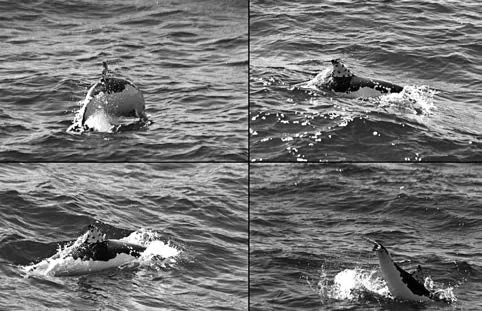
Photo credits: Andreú y Fernández (2012) original research
The belly, the pectoral fins as well as the muzzle lack pigmentation, but their eyes do have pigmentation. Since most of the body of the specimen is white,
We can rule out melanism, and since the animal has pigmentation marks all over the body and pigmentation in the eyes, we can rule out albinism, which is why we classify it as leucism!😱. "

What do you think about this❓
Have you had the opportunity to see an animal with albinism❓
Let me know in the comments💬...

DNA - Densifying Nature-Appreciation :

DNA is an organization to foster and DENSIFY NATURE-APPRECIATION which aims to establish REPORTS OF BIODIVERSITY DATA that is contributed by all of us Hiveans and subsequently cataloged.

DNA animation GIF by @Suheri
Therefore DNA searches for HIGH-QUALITY posts that aim to DESCRIBE and determine the BIODIVERSITY AROUND YOU with added EXPLANATIONS and INFORMATION. For these informative posts they offer a CURATION SERVICE using the @dna.org account. It is also a CURATION TRAIL. Just add the #dna TAG if you think that any of your posts is what they are looking for.
 Clickable Banner for free usage. Redirects to the Amazing Nature Community
Clickable Banner for free usage. Redirects to the Amazing Nature Community Clickable Banner by @barbara-orenya
Clickable Banner by @barbara-orenya
@juanbg: Moderator and curator of Amazing Nature Community
